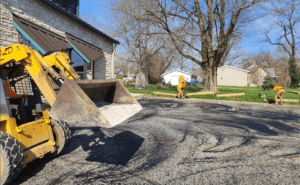- 0 Like
- 0 Comments
- By john arnold
- Asphalt Know How, Asphalt Paving, Commercial Paving
Now that fall is officially here, it’s a good time to make sure you line up your pavement maintenance projects for the season. A proactive paving plan — where you assess and schedule your maintenance projects in early spring — can help ensure your jobs get done in a timely manner, before minor issues turn into major problems. If you don’t have the time or resources to carefully examine all your paved areas and take note of potential problems, give professionals a call.
Inspect
Planning a proper course of action is much easier if you know what you are facing. You or your asphalt contractor should walk your pavement every spring and again in the fall to determine whether there are issues that need to be addressed. If you only have the time or the budget for an annual inspection, most asphalt contractors recommend that you schedule it for spring.
Repair
Maintaining the integrity of your pavement’s foundation is of great importance. Without a stable, strong foundation, your asphalt pavement can alligator and/or subside, resulting in potholes, poor drainage and extensive cracking. Virtually all foundation damage is caused by water infiltration. Studies have shown that pavements can require complete reconstruction in less than seven years if cracks and potholes are left open to the elements. Most contractors will include any necessary repairs when quoting asphalt sealcoating services; the sealant will have a remarkably short life if repairs are not made before it is applied.
Seal
Some people think that sealants are just a cosmetic treatment for asphalt pavement, but they are incorrect. Although it is true that sealants restore the color to faded pavements, they also block ultraviolet radiation and help protect the pavement from automotive fluids, water penetration and tire scuffing. Most asphalt sealcoating contractors advise that a new pavement should be sealed within 12 months of its installation, followed by additional applications every 18 to 36 months.
Resurface
Every pavement will deteriorate over time and reach the end of its useful life in 10 or 15 years. If you have been diligent about your pavement maintenance, the foundation may be stable enough to receive an asphalt overlay when it needs a major rejuvenation. Pavements that have endured a lifetime of neglect will probably need to be removed and rebuilt at a substantially higher cost.
The industrial and commercial asphalt world is always changing. Please like this article, share this article, or visit us at https://arnoldasphalt.com.

